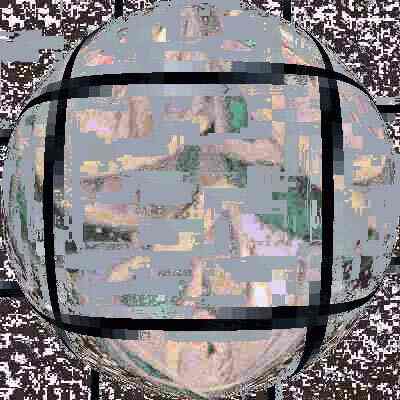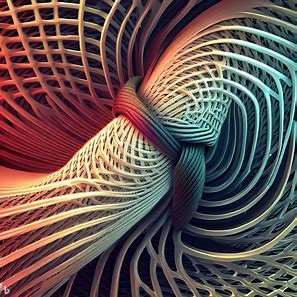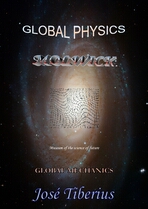3.b.2. Atomic particles
Each time we introduce a concept in Global Mechanics, we should keep in mind that it is necessary to have read the previous chapters. The proposed atomic model needs the new concepts of physical mass, electromagnetism, and the force of gravitation.
At the same time, these concepts will better grasp after reading this chapter on the nucleus of the atom and atomic particles, especially in regards to the force of gravity created by physical mass.
We have divided the analysis of atomic particles into the study of the particles of the nucleus of the atom (protons and neutrons) on the one hand, and electrons on the other.
In turn, the study of atomic particles of the nucleus presents two parts. The first part is about mass, the concept of half-life, and the distinctive characteristic that provides stability to neutrons and protons, both within and outside of the atomic nucleus.
The second part of the study of atomic particles of the nucleus poses ideas regarding both the strong and weak nuclear interactions in the interior of a proton or neutron, as well as that which holds together the atomic nucleus, called the residual strong nuclear force.
The concept of electrons, their formation and the characteristics of their orbits are the focus of the first part of the second block of proposals regarding electrons; which completes a study of the analytical conditions of equilibrium in electron motion in the theory of the atom put forth by Global Mechanics.
All of the above is merely touched upon briefly and for the sole purpose of presenting the novelties of the atom model in Global Mechanics.
Let us take a look at the following characteristics of the stable particles of the nucleus of the atom, protons, and neutrons:
Mass of the stable particles of the atom
According to Wikipedia, the mass of the proton is 1,836 times that of the electron, and the mass of the neutron is 1,838 times that of the electron. The mass of the electron, according to Wikipedia, is 9.10x 10-31 kg
To facilitate comparisons, the mass of the proton represents a unit of atomic mass (amu).
The radius of the atom is not precise, and it will inevitably vary considerably between different atoms. The radius of the hydrogen atom is approximately 10-10 m. Likewise, the radius of a proton is on the order of 10-15 m, which means that in the case of the hydrogen atom the radius of the atom is about a hundred thousand times greater than that of the proton.
The mass of the electron comes from reaching the physical limit of transversal elasticity of the reticular structure of matter or Global Aether. So, we can form a vague, yet intuitive, idea of the size of the stable atomic particles –protons, and neutrons–, regarding the size of the filaments of Global Aether.
From another point of view, the mass of the proton and the neutron contains the mass of the three quarks which make them up, plus the mass of the loops or curls of the strong field.
The formula of Theory of Relativity, E = mc², is no more than a mathematical euphemism, given that Modern Physics not only does not know what the mass of atomic particles is, it does not even have a physical proposal to this effect.
-
The average lifetime of protons and neutrons
According to Wikipedia, the average lifetime of a neutron outside of the atomic nucleus is approximately 15 minutes.
As far as the half-life of a proton is concerned, there is no specific number, but it is very high, millions of years or more.
Without forgetting that the half-life of a proton and a neutron refers to the specific conditions on Earth, there has to be some physical cause for the enormous stability of the proton and neutron, since the neutron does not disintegrate, but instead transforms into a proton.
The stability of the particles of the atom means that enormous energy is required for them to decompose, or, that their elastic tendency to revert to their initial state has a very high-energy barrier.
Maximum size of atomic particles: neutrons and protons
The similar size of the elements of the atomic nucleus, neutrons, and protons, gives us a clue in that it could be a size similar to the maximum size of stable atomic particles –in normal conditions.
All particles bigger than neutrons and protons are very unstable.
Likewise, since the elementary particles with mass and smaller than neutrons and protons are almost all very unstable, it seems that there is a relation between a minimum size and the stability of the atomic particles. In other words, the minimum size of the stable particles of the atom is very similar to their maximum size. It appears that the reticular size is significant when it comes to the play of nuclear forces in the atomic world.
Proton with quarks 
As we can observe, the heyelogic microscope allows us to show a reticule with a proton or neutron in its internal volume. In the figure, we can distinguish something similar to three quarks made up of rubber bands representing the filaments of Global Aether, which is not directly detectable for the moment.
We are going to continue with the creation process of a stable subatomic particle with mass, paying particular attention to its volume; for this, we shall separate the creation process into the following stages:
-
Formation of loops or curls of Global Aether, and the contraction of Global Aether
Due to the electromagnetic energy, the loops will accumulate reversible deformation energy, and there will be a strong tendency to revert to the original state.
Because of the spatial contraction of Global Aether within the three dimensions of Euclidean space, the initial volume of the mass, or curls, would be smaller than that of a reticule of Global Aether.
Maximum elasticity of the filaments of a reticule
The accumulation of curls will continue increasing the volume of the mass, but there will come a moment in which the volume of a reticule will limit the mass’ growth –the filaments have a large elasticity, but even so, there is a limit.
The contraposition of forces between those of the formation of mass and those of the reticule is energetic.
It is worth noting that the elasticity of the filaments relates to the square of the distance since it is the same elastic energy of filaments supporting the gravitational and electromagnetic forces.
Nonetheless, the resistance to stretch of the filaments will increase with distance, which, to a certain extent, is opposite to the force of gravity, or electromagnetism, both of which decrease with distance. This aspect is reminiscent of the concept of asymptotic freedom in Quantum Chromodynamics.
-
The Equilibrium between accumulated electromagnetic energy and elastic energy of the reticule
We need some condition of stable equilibrium to explain the stable atomic particles.
If we imagine several huge particles introduced into the reticule, it is possible that they could end up tangled and stuck, and form a type of knot or blockage with the filaments of the reticule in such a way that they create a stable atomic particle.Proton AI Bing Image 
It would be a process similar to when knots form in strings or rubber bands when they are twisted, and by stretching them, some knots become even stronger and more stable.
A special mention here to the theory of knots of Lord Kelvin.
Random process with multiple elementary particles
Almost certainly, obtaining this equilibrium is not probable, but if we think of a large number of elementary particles that could form within a robust and variable electromagnetic fields, perhaps it can be easier to understand that achieving this would not be so far-fetched of an idea.
The three quarks making up the atomic particles of protons and neutrons could relate to the three-dimensional shape of the reticule. Global Mechanics proposes the shape of a cube because it is simple and because by having six sides, it coincides with the idea of three internally crossed particles. There should be one side –or face– for the entrance, and another for the exit for each quark. However, it is an adventurous and renormalizable detail.
Elementary particles more extensive than those corresponding to the maximum volume of a reticule may eventually form, but they will be very unstable because there will not be any mechanism to prevent its reversion unless there is an enormous electromagnetic force. It could be the case in some phases in the creation of black holes, which is a topic that shall be touched upon again in the book about Global Astronomy.
-
-
The mass of stable atomic particles is the cause of the gravitational force
An essential element of Global Mechanics comes from this mechanism of the formation of mass. The increase in the volume of a reticule due to the presence of atomic particles will produce an elastic force derived from the tension of the longitudinal curvature of the adjacent filaments of the reticules with the inverse-square law, which is precisely the gravitational force.
The same argument leads us to the fact that the mass of the smaller particles does not generate the gravitational force because they do not have enough volume to produce longitudinal curvature in the filaments of Global Aether. At least, the spatial configuration will be different, although it could produce a slight gravitational effect. Due to the distinct characteristics of this mass, we call it wavine.
